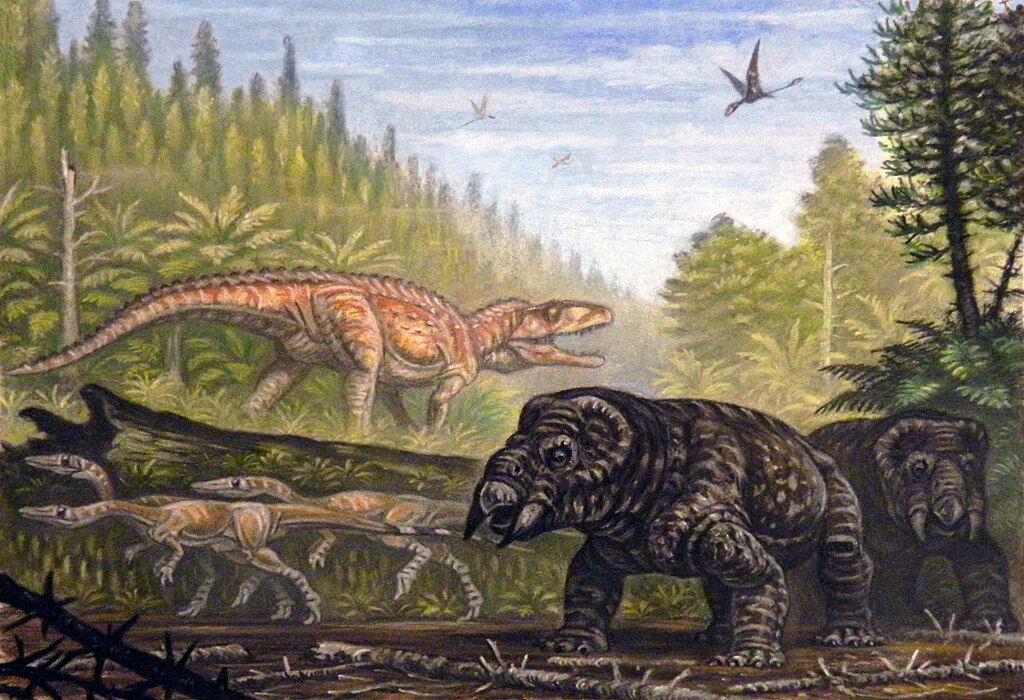In the vast tapestry of prehistoric life, some creatures defied every expectation we had about dinosaurs. While most people picture fearsome predators with razor-sharp teeth or gentle giants with long necks, there existed a dinosaur so bizarrely armored that paleontologists initially couldn’t believe what they were seeing. This wasn’t your typical horned dinosaur like Triceratops, with its magnificent facial display. Instead, this ancient beast carried its most striking weapons in the most unexpected place imaginable — jutting directly from its hips like medieval armor gone wild.
Meet Kentrosaurus: The Hip-Horned Wonder
Kentrosaurus aethiopicus stands as one of paleontology’s most fascinating puzzles, a dinosaur that seemed to break all the rules about where defensive weapons should be placed. Unlike its famous cousin Stegosaurus, this African giant didn’t rely on a traditional tail club or back plates alone. Instead, evolution equipped it with massive, intimidating spikes that projected horizontally from its hip region, creating a defensive barrier unlike anything else in the dinosaur kingdom.
These weren’t small, decorative features either. The hip spikes of Kentrosaurus could reach lengths of over two feet, turning the creature’s midsection into a medieval knight’s worst nightmare. Scientists believe these formidable weapons served multiple purposes, from deterring predators to establishing dominance within their own species.
The name itself tells the story — “Kentrosaurus” literally means “spiked lizard,” though this translation barely captures the sheer audacity of this creature’s design. When paleontologists first uncovered fossils in Tanzania’s Tendaguru Formation, they initially thought they were looking at remains from multiple different animals.
The African Giant That Rewrote Stegosaur Rules
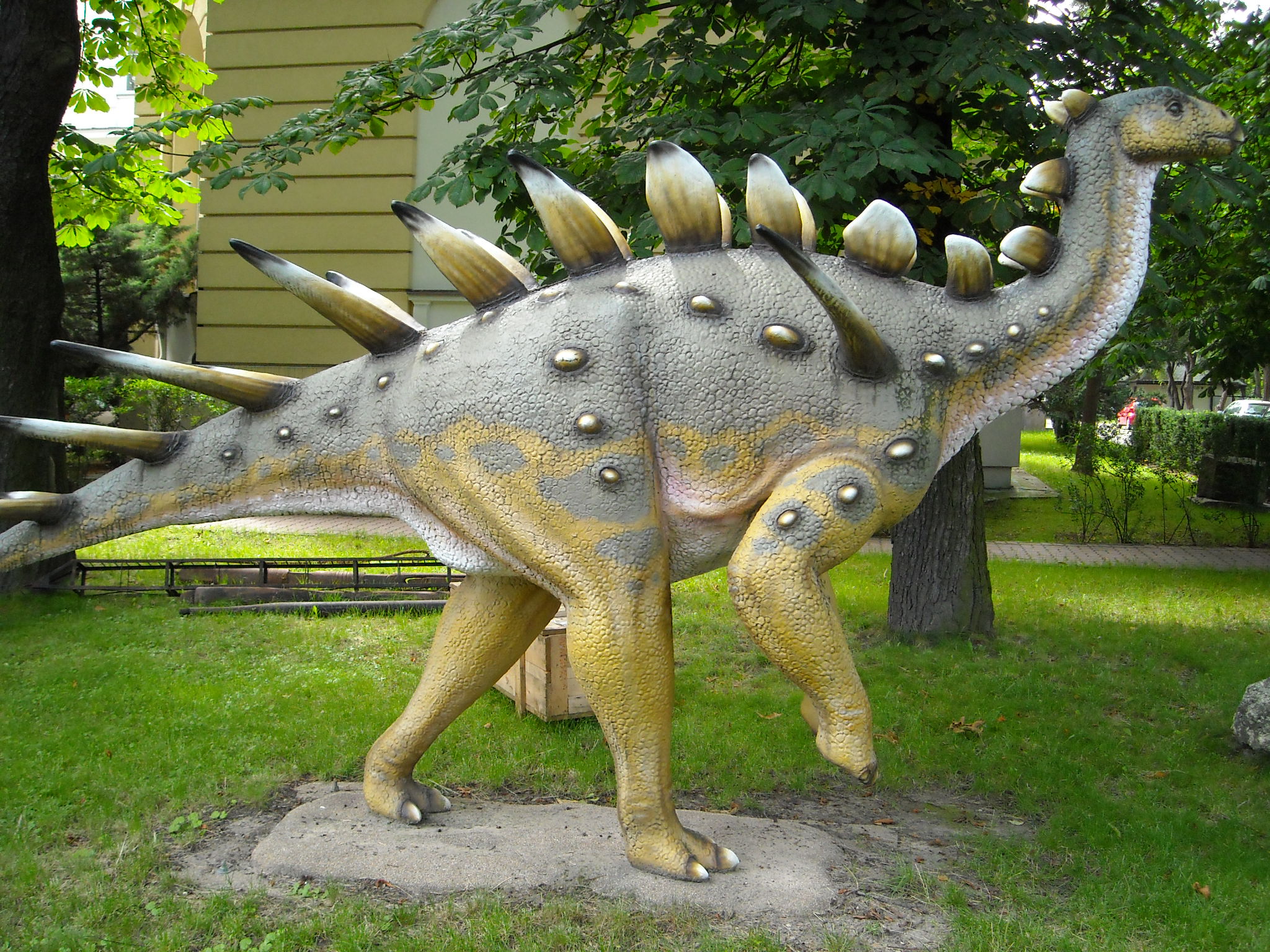
Standing roughly 15 feet long and weighing close to a ton, Kentrosaurus roamed the lush landscapes of Late Jurassic Africa around 150 million years ago. This wasn’t the barren desert we might imagine today, but rather a verdant paradise filled with ferns, cycads, and towering conifers. Rivers meandered through forests where this remarkable dinosaur grazed alongside massive sauropods and dodged hungry predators.
What made Kentrosaurus truly special wasn’t just its size, but how it completely reimagined defensive strategy. While most stegosaurs relied on their famous thagomizer — that cluster of tail spikes made famous by Gary Larson’s Far Side cartoons — Kentrosaurus took a different approach entirely.
The hip spikes created what paleontologists call a “zone of denial” around the animal’s most vulnerable midsection. Any predator attempting to attack from the side would face a wall of bone-piercing spikes, each capable of inflicting devastating wounds.
Evolution’s Bold Experiment in Defensive Design
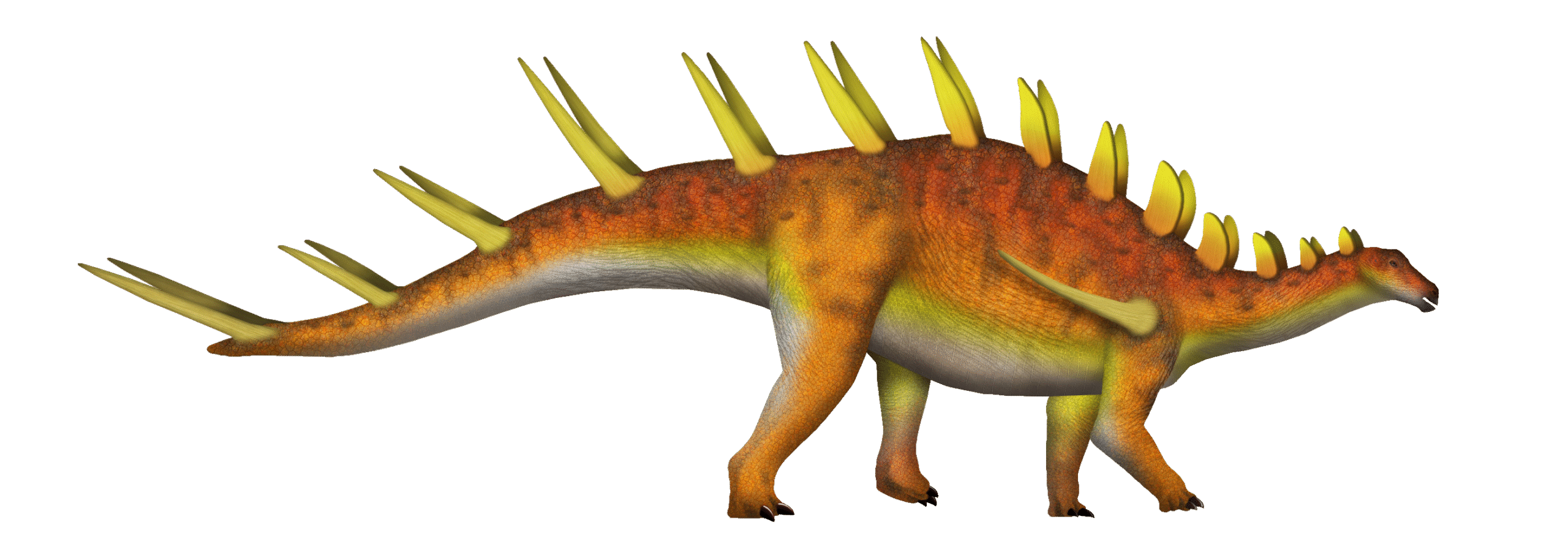
The placement of horns on Kentrosaurus’s hips represents one of evolution’s most daring experiments in defensive architecture. Think of it like nature’s version of a medieval castle — instead of walls and towers, this dinosaur sprouted its own fortress directly from its skeleton. The hip region, typically one of the most vulnerable areas on any large herbivore, became its strongest defensive zone.
These spikes weren’t randomly placed either. Careful analysis of fossil remains shows they were positioned at precisely the right angle to maximize defensive coverage while maintaining the animal’s mobility. It’s as if evolution had consulted with military engineers to design the perfect anti-predator system.
The hip horns also likely served as a warning system, much like the bright colors on poisonous frogs today. Predators would have learned quickly that approaching a Kentrosaurus from the side meant facing those intimidating spikes head-on.
The Tendaguru Discovery That Shocked Science
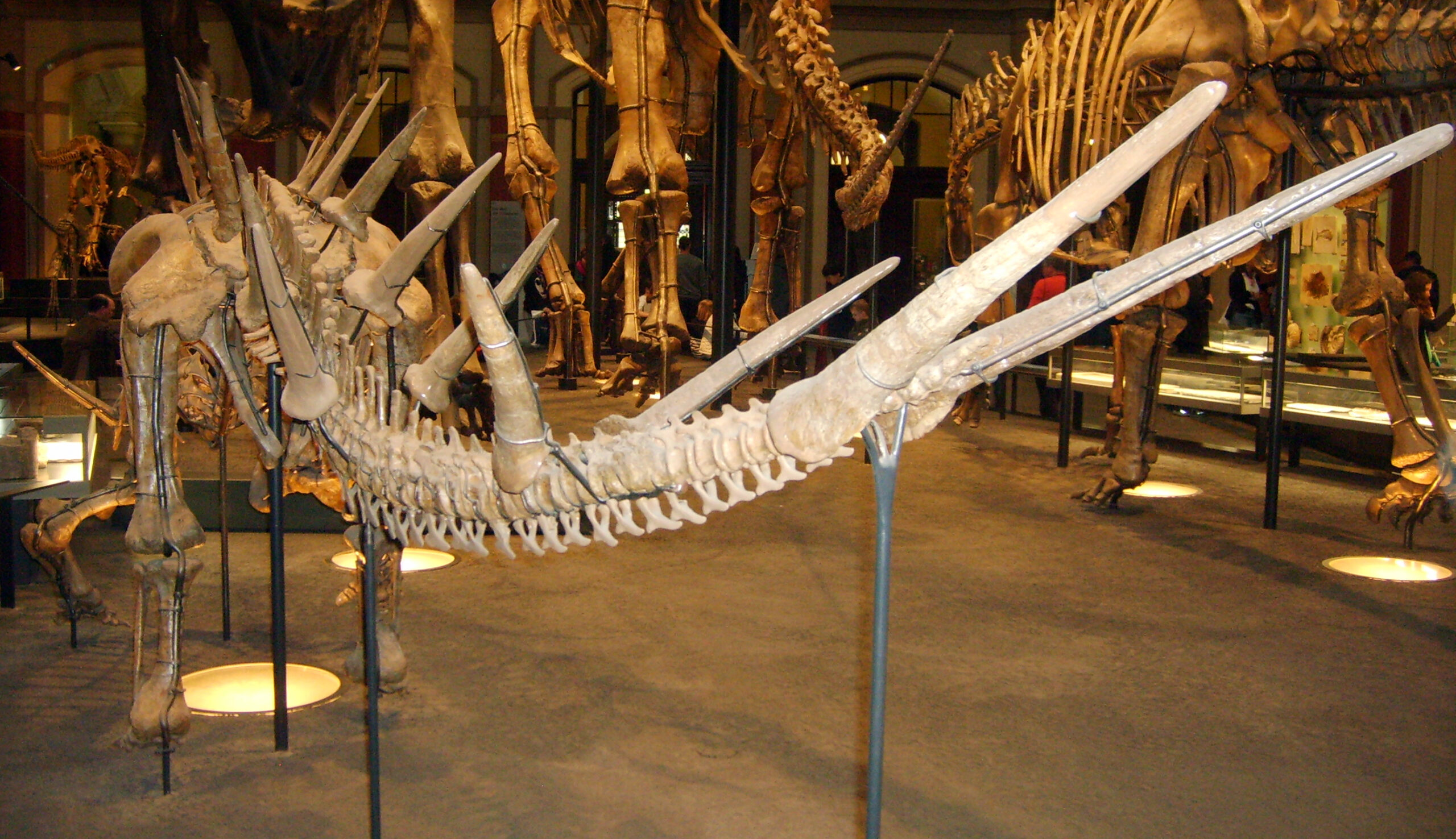
The story of Kentrosaurus’s discovery reads like an adventure novel from the early 1900s. German paleontologist Werner Janensch led expeditions to what is now Tanzania, uncovering fossil treasures that would revolutionize our understanding of African dinosaurs. When workers first unearthed the distinctive hip spikes, expedition members couldn’t quite believe what they were seeing.
The fossils were so unusual that initial reconstructions placed the spikes in entirely wrong positions. Some early scientists thought they belonged on the shoulders, others believed they were tail weapons. It took decades of careful analysis to realize that nature had been far more creative than anyone had imagined.
The Tendaguru Formation proved to be one of Africa’s richest dinosaur graveyards, but Kentrosaurus remained its most enigmatic resident. Even today, paleontologists continue to debate exactly how these hip horns functioned in the living animal.
How Hip Horns Changed the Predator-Prey Game
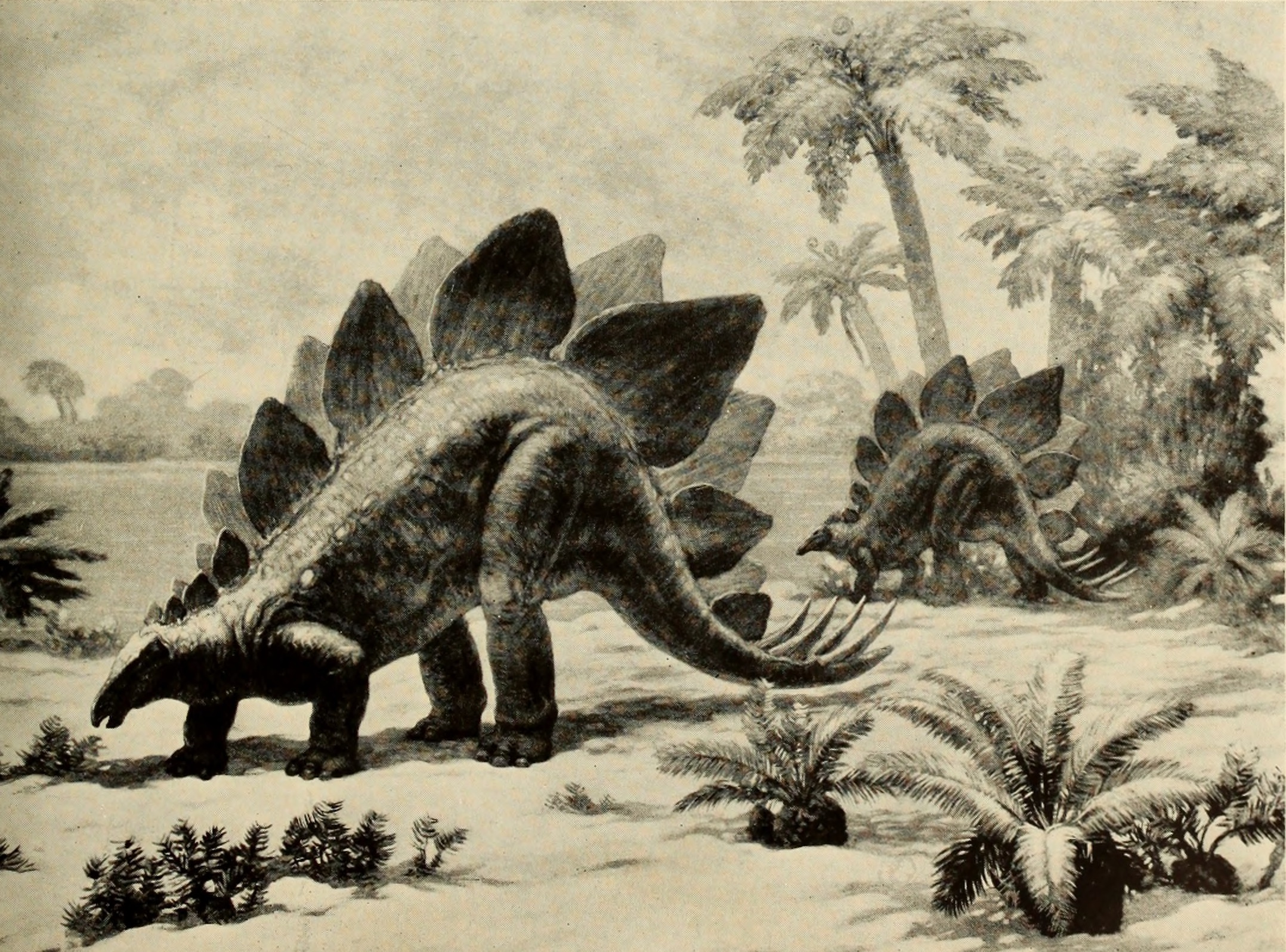
Imagine being a large theropod predator in Late Jurassic Africa, scanning the landscape for your next meal. You spot what appears to be a typical stegosaur, seemingly vulnerable from the side where most herbivores are defenseless. As you approach for the killing strike, massive spikes suddenly become visible, transforming your easy target into a deadly fortress.
This element of surprise may have been Kentrosaurus’s greatest weapon. The hip spikes weren’t immediately visible from all angles, meaning predators might not realize the danger until they were already committed to an attack. By then, it would be too late to change strategy.
The psychological impact on predators cannot be overstated. After a few painful encounters with Kentrosaurus, local predators would have developed a healthy respect for any stegosaur they encountered, fundamentally changing hunting patterns across the entire ecosystem.
Comparing Kentrosaurus to Its Famous Cousin Stegosaurus
While Stegosaurus gets most of the fame in popular culture, Kentrosaurus was arguably the more innovative of the two stegosaur species. Both shared the characteristic back plates, but where Stegosaurus relied primarily on its tail spikes for defense, Kentrosaurus took a more comprehensive approach to personal security.
The differences extend beyond just spike placement. Kentrosaurus was generally smaller than its North American cousin, suggesting that its unique defensive adaptations allowed it to thrive in environments where size alone wouldn’t guarantee survival. The hip spikes essentially allowed it to punch above its weight class.
Interestingly, both species lived during roughly the same time period, suggesting that different continents drove different evolutionary solutions to the same basic problem: how to avoid becoming lunch for massive predators like Allosaurus and its relatives.
The Biomechanics Behind the Hip Spike Defense System
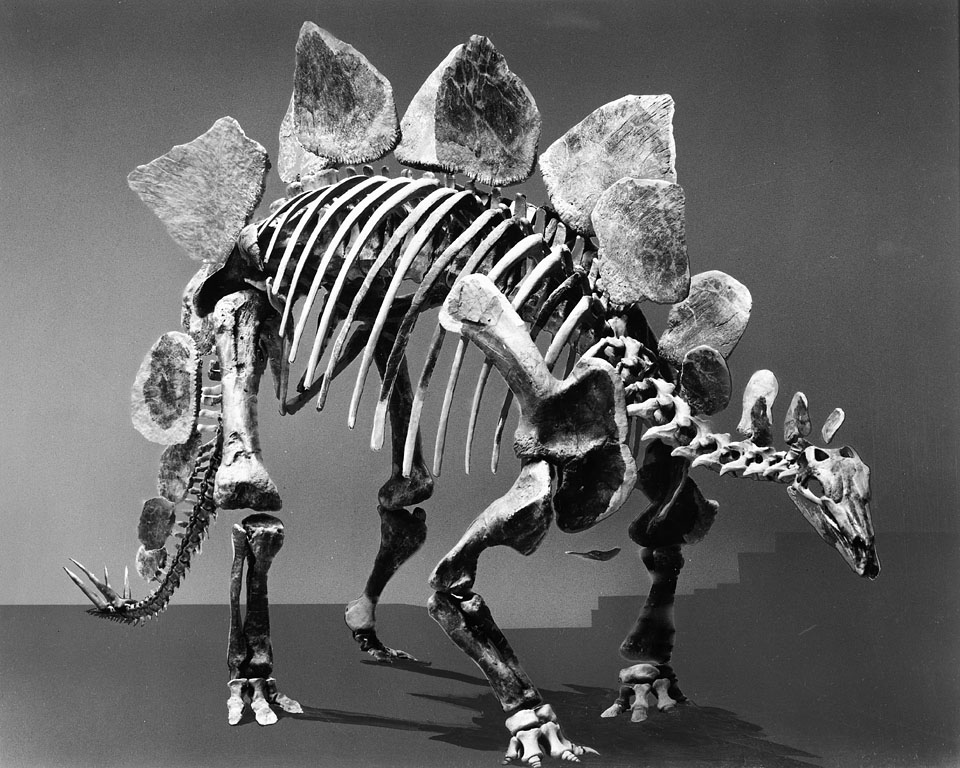
Engineering analysis of Kentrosaurus’s hip spikes reveals a masterpiece of biological design. The spikes were anchored deep into the animal’s hip bones, creating a connection strong enough to withstand tremendous impact forces. Think of them as nature’s version of rebar-reinforced concrete, designed to transfer energy from attacks directly into the animal’s strongest skeletal framework.
The angle of the spikes was equally impressive. Rather than pointing straight out, they angled slightly backward, meaning that any predator striking them would experience a deflecting force that could potentially break teeth or cause serious jaw injuries. It’s similar to how modern riot shields are designed to redirect rather than simply absorb impact.
Computer models suggest that a charging predator hitting these spikes would experience forces comparable to running into a tree trunk. The difference is that trees don’t fight back — Kentrosaurus could potentially pivot and drive its hip spikes directly into an attacker.
Daily Life with Hip-Mounted Weapons
Living with massive spikes protruding from your hips would seem like a significant inconvenience, but Kentrosaurus had millions of years to adapt to its unique anatomy. The animal’s gait and posture were specially modified to accommodate these defensive weapons, creating a distinctive swaying walk that kept the spikes clear of vegetation and other obstacles.
Social interactions within Kentrosaurus herds would have been fascinating to observe. These animals needed to be extremely careful during mating rituals and while establishing social hierarchies. A careless movement could seriously injure a herd mate, so evolution likely favored individuals with exceptional spatial awareness.
Feeding behavior was also affected by the hip spikes. While grazing, Kentrosaurus had to position itself carefully to avoid getting the spikes caught in dense vegetation. This constraint may have influenced which plants the animal preferred and how it moved through different types of terrain.
The Mystery of Spike Growth and Development
One of the most intriguing questions about Kentrosaurus concerns how these massive hip spikes developed as the animals grew from hatchlings to adults. Juvenile fossils suggest that baby Kentrosaurus were born with small spike buds that gradually lengthened throughout their lives, much like deer antlers but made of solid bone rather than annually shed material.
The growth pattern of these spikes likely followed the animal’s overall health and nutrition. Well-fed individuals probably developed longer, more impressive spikes, while those facing food shortages might have smaller defensive weapons. This could have created a visible hierarchy within herds, with the best-fed individuals sporting the most intimidating hip armor.
Scientists speculate that the spikes continued growing throughout the animal’s lifetime, meaning that older Kentrosaurus individuals were essentially walking fortresses. The largest specimens may have had hip spikes approaching three feet in length — truly fearsome weapons by any standard.
Predator Responses to Hip Spike Evolution
The evolution of hip spikes in Kentrosaurus didn’t occur in a vacuum — predators were simultaneously evolving their own counter-strategies. Theropod dinosaurs living alongside Kentrosaurus show evidence of increasingly powerful jaws and more robust skulls, suggesting an arms race between defensive innovation and predatory adaptation.
Some predators may have developed pack hunting strategies specifically to deal with heavily armored prey like Kentrosaurus. By attacking from multiple angles simultaneously, they could potentially overwhelm even the most well-defended herbivore. However, this strategy came with significant risks, as hip spikes could injure multiple attackers during a single encounter.
The presence of Kentrosaurus may have also influenced the evolution of smaller, more agile predators that could attack from above or below the spike zone. This created a diverse predator community, each species specializing in different hunting strategies and prey types.
Modern Analogies to Hip Spike Defense

While no living animal has evolved defensive spikes from its hip bones, nature provides several interesting parallels to Kentrosaurus’s defensive strategy. Porcupines use quills to create zones of denial around their bodies, while some fish species have evolved venomous spines in unexpected locations. These modern examples help us understand how Kentrosaurus’s unusual adaptations might have functioned.
The closest modern analogy might be found in certain species of armored fish, which have evolved sharp spines that lock into defensive positions when threatened. Like Kentrosaurus, these creatures turn their entire bodies into weapons that are dangerous to approach from any angle.
Even some plants have evolved similar strategies, with species like the barrel cactus developing protective spines that emerge directly from their main body structure rather than from specialized branches or leaves.
The Environmental Pressures That Shaped Kentrosaurus
The Late Jurassic period in Africa was a time of intense evolutionary pressure, with massive predators and abundant plant-eating dinosaurs competing for resources in lush but dangerous environments. Kentrosaurus evolved its unique defensive system in response to specific threats that may not have existed on other continents during the same period.
The presence of large crocodilians in African rivers and lakes may have influenced the placement of defensive spikes. Unlike purely terrestrial predators, crocodilians attack from water level, making hip-level defenses particularly effective against amphibious threats. This environmental factor could explain why Kentrosaurus evolved such a different defensive strategy compared to its North American relatives.
Climate patterns in Late Jurassic Africa also created seasonal migration routes that brought different species into contact. During dry seasons, animals would have congregated around water sources, creating intense competition and predation pressure that favored individuals with the most effective defensive adaptations.
Fossil Evidence and Scientific Debates
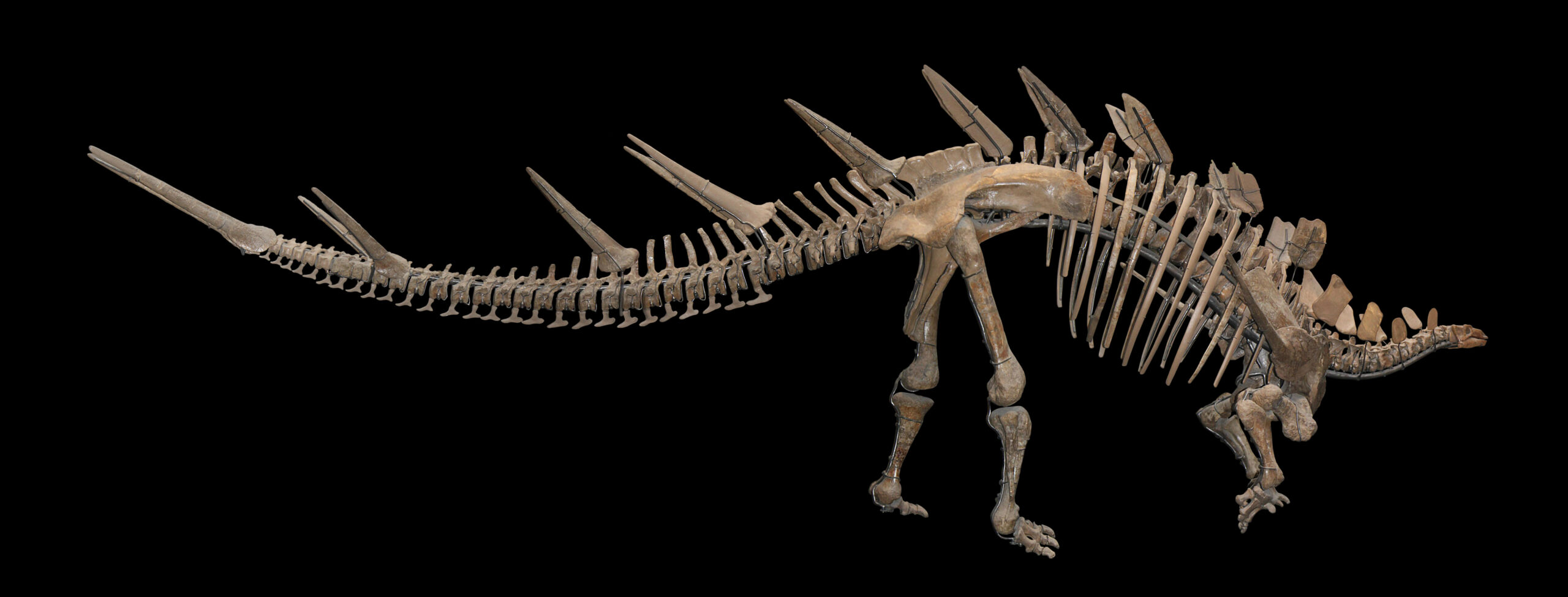
Despite over a century of study, Kentrosaurus continues to generate scientific debate. The original fossil specimens were damaged during World War II bombing raids, leaving modern paleontologists to work with casts and fragmentary remains. This has led to ongoing discussions about exactly how the hip spikes were positioned and whether some specimens represent different species entirely.
Recent discoveries of additional Kentrosaurus material have provided new insights into the animal’s anatomy, but they’ve also raised new questions. Some specimens show evidence of healed injuries on the hip spikes, suggesting that these weapons were indeed used in combat situations, either against predators or during intraspecies conflicts.
Advanced imaging techniques are now being applied to existing fossils, revealing details about the internal structure of the hip spikes that weren’t visible to earlier researchers. These studies suggest that the spikes were hollow in some areas, reducing weight while maintaining strength — another example of evolution’s engineering brilliance.
The Legacy of Hip-Horned Dinosaurs
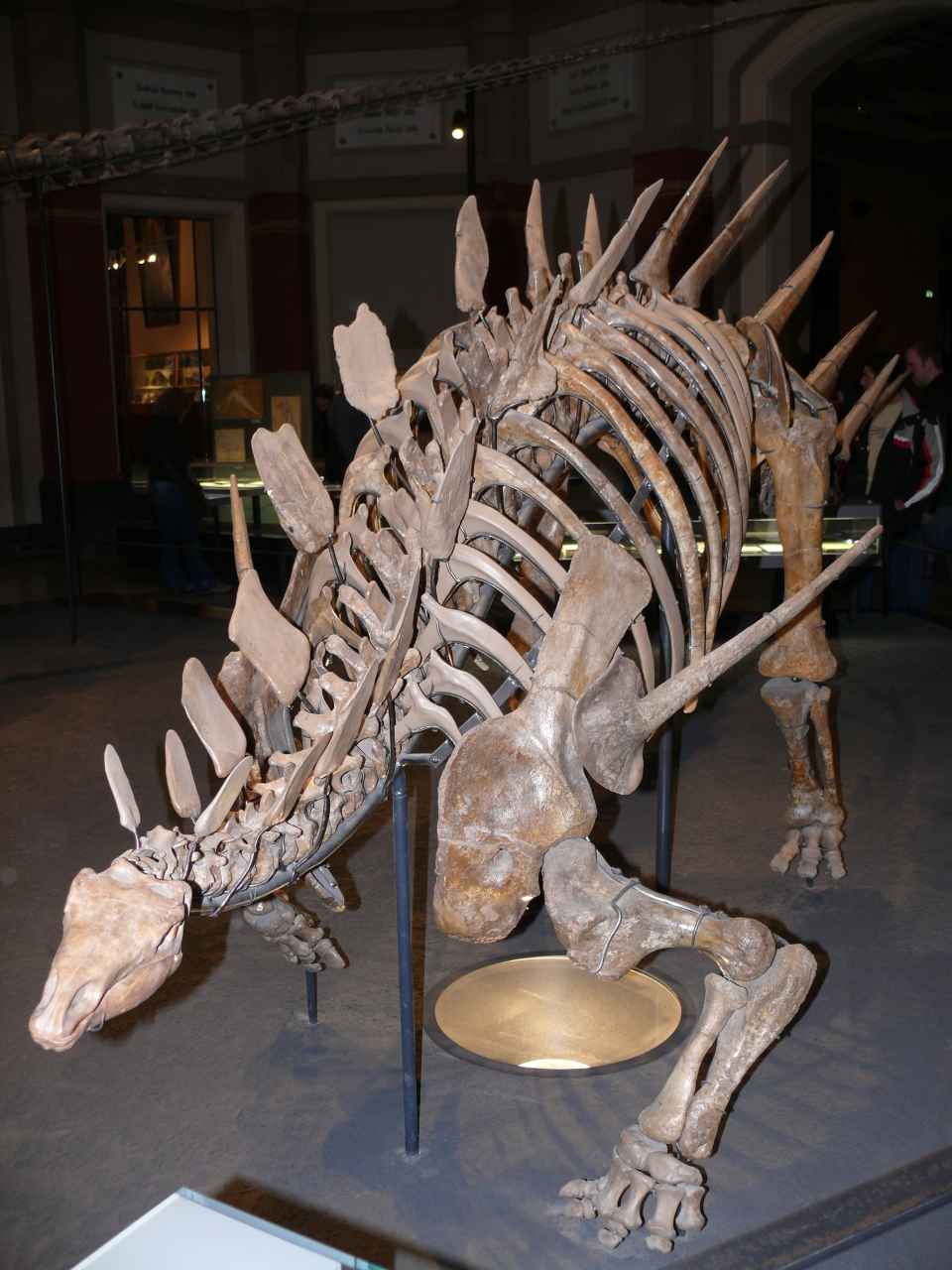
Kentrosaurus represents more than just an unusual dinosaur — it embodies evolution’s endless creativity in solving survival challenges. The hip spike innovation demonstrates that there’s no single “correct” way to evolve defensive adaptations, and that nature often finds solutions that human engineers might never consider.
The discovery of Kentrosaurus also highlighted the importance of African fossil sites in understanding dinosaur diversity. For too long, paleontology focused primarily on North American and European discoveries, missing the incredible variety of species that once roamed other continents.
Modern conservation efforts can learn from Kentrosaurus’s story. The environments that produced such remarkable evolutionary innovations were complex ecosystems that supported incredible biodiversity. Protecting similar environments today ensures that evolution can continue its creative work for future generations.
What Kentrosaurus Teaches Us About Evolution
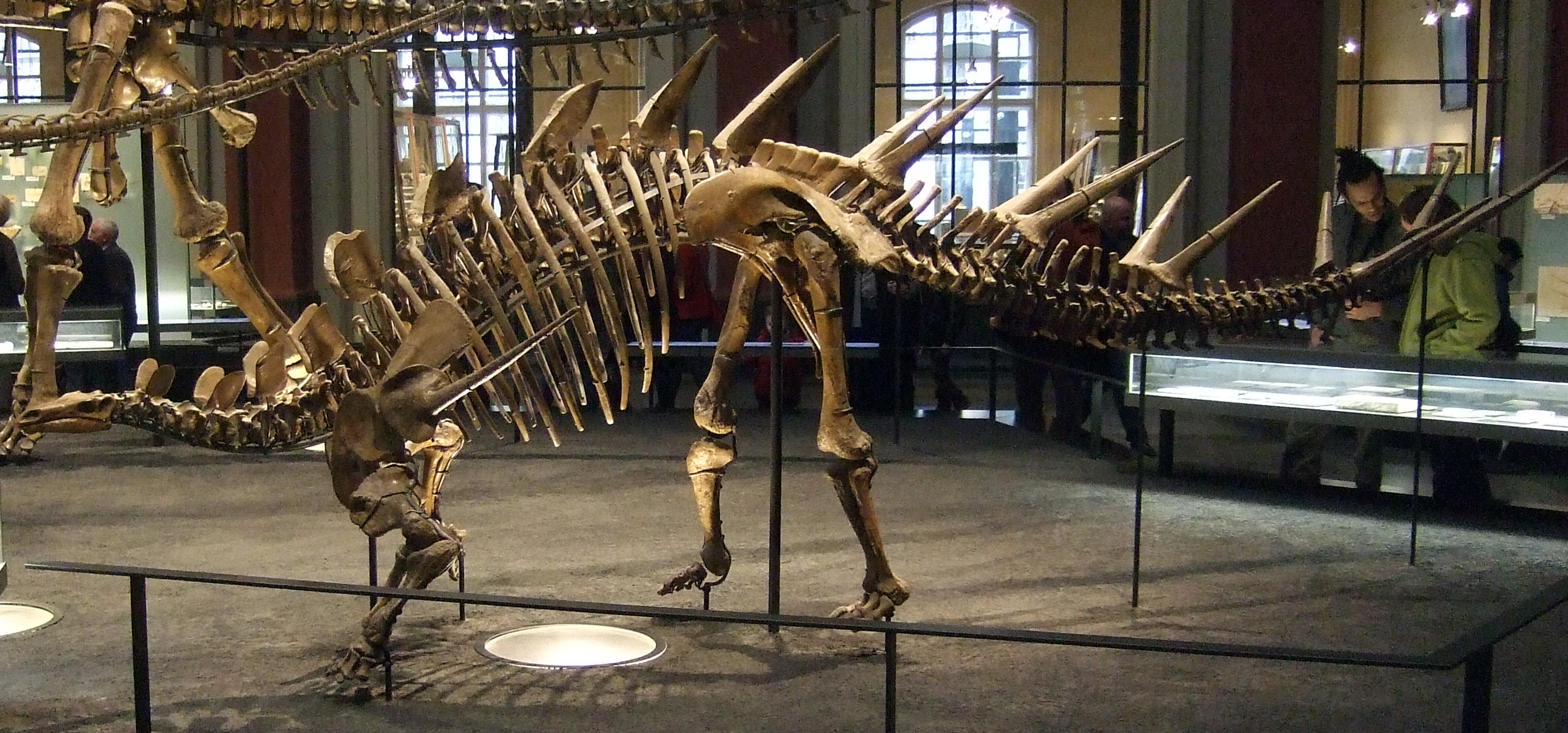
The story of the dinosaur with horns on its hips reveals fundamental truths about how life adapts to challenges. Evolution doesn’t follow predetermined paths or stick to conventional solutions — it experiments with whatever works, regardless of how unusual the result might appear. Kentrosaurus succeeded not because it followed established patterns, but because it dared to be different.
This remarkable creature also demonstrates the importance of environmental pressures in shaping evolutionary outcomes. The unique conditions of Late Jurassic Africa created opportunities for defensive innovations that might never have emerged elsewhere. Understanding these connections helps us appreciate the intricate relationships between organisms and their environments.
Perhaps most importantly, Kentrosaurus reminds us that the prehistoric world was far stranger and more wonderful than we often imagine. Every new fossil discovery has the potential to completely reshape our understanding of ancient life, revealing creatures that challenge our assumptions about how evolution works.
The hip-horned dinosaur of ancient Africa stands as a testament to evolution’s boundless creativity, a reminder that survival often requires thinking outside conventional boundaries. In a world where predators ruled through size and ferocity, one remarkable species found safety in the most unexpected place — transforming its hips into a fortress that no predator could breach. What other evolutionary surprises might still be waiting in the rocks beneath our feet?



